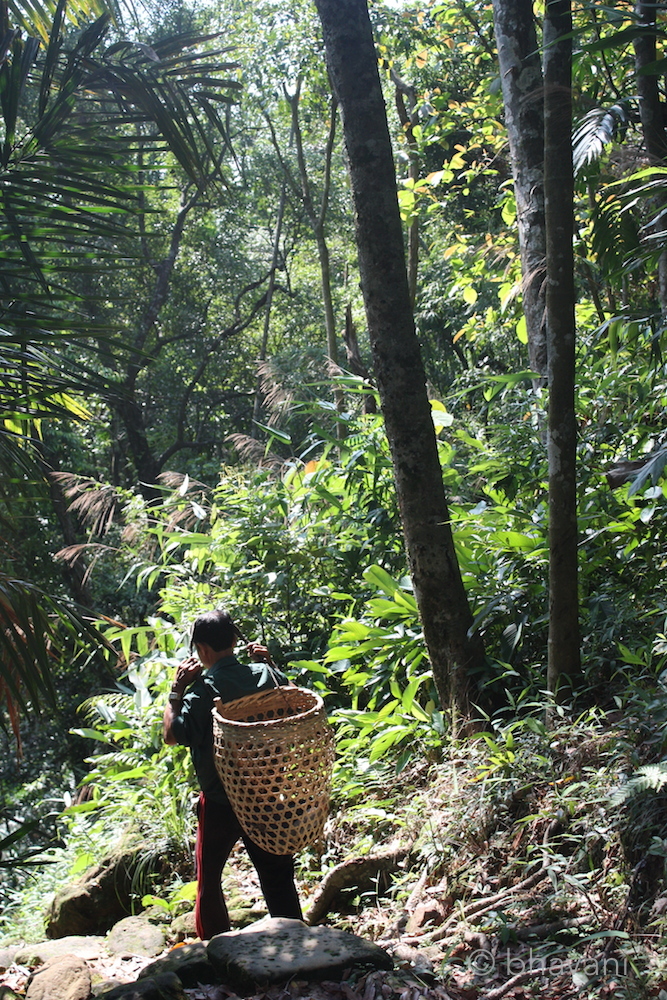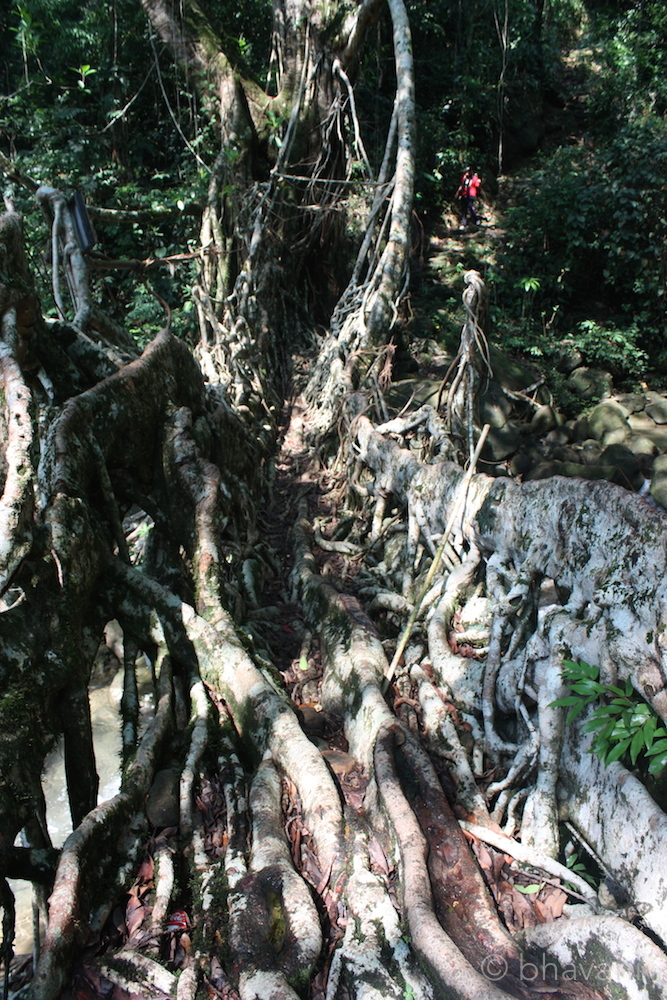By Bhavani
A couple of years ago, three of us went on an all-girls trip to Meghalaya . Deciding against popular tourist haunts, we skipped the main Cherrapunji town and made our way to a hotel 15 km in the outskirts instead. The Cherrapunjee Holiday Resort, contrary to the name, is a family run guesthouse perched on top of a hill that boasts better views than Cherrapunji itself. It definitely lived upto every bit of the promise! The host told us about a range of the activities we could engage in and one caught our fancy—the root bridges. How could there be roots that were directed to grow across the rivers? Root bridges that could bear 50 people at one time? There were four bridges close by and we decided to do the easiest trek down to the one that lay in Umunoi. A determined trio went to bed but the less sleepy duo set out the next morning with some fruit, water, and a backpack stuffed with gumption.

Our guide, a local from the village, was wearing flip-flops! I looked at our expensive ‘trekking’ shoes designed to navigate this terrain and asked, ‘Will you manage?’ He smiled and shook his head with that all-over nod that probably meant ‘Yes I will’. At the beginning, the trek seemed simple, but soon the road turned into a steep descent over rough stone steps covered in moss. Moss in May? I wondered to myself. Doesn’t it grow in monsoons or maybe it’s… WHAM! My friend had fallen flat on her behind. And that set the tone for the rest of the trek. Two falls and one ‘sole-less’ shoe later we reached the base of the hill with zero pride. That ‘easy’ trek moved to difficult in our dictionary, but all pain vanished when we saw the root bridges in front of us.
Intertwined roots ran from one bank to the other forming a bridge of comfortable width to carry two abreast. It had a side railing for support, formed by yet another root. The bridge was dynamic and growing in strength with every passing day. Our guide told us about his Khasi ancestors, the masterminds behind these bridges. The roots of the rubber tree are directed to grow horizontally through hollowed betel nut trunks. These bridges take over 10 to 15 years to grow and can extend over 50 to 100 feet. They are believed to last over 500 years with little ‘maintenance work’. In a place that once received the highest amount of rainfall in the world , other wooden bridges might rot and decay, but these, thrive.

‘Living bridges’ our guide called them—I rolled those words over my tongue, liking the sound of it and the sheer ingenuity on display! I removed my shoes and walked across barefoot, feeling the firm roots, the soft mud and the stones all forming a carpet for me.. Below me, the river went by rapidly, as I lingered above, secure. Nature goes out of its way, literally, to help man. Do we reciprocate?
A little time later, rested and content we turned to go back to our hotel. We reached the base of the path and it hit us—a steep descent meant a steep ascent! We stood there staring up at the path in front of us with our mouths open and eyes round like saucers.Would we ever reach the top?
P.S. We were at our lowest levels of fitness then; others completed the entire trek in 4 hours with little difficulty. Today, we might too!
To explore stunning homestay options in Meghalaya : Homestays in Meghalaya
About the traveller: Bhavani is a traveller by choice, photographer by interest and writer by desire. She has crafted 12 heritage walking tours for Audio Compass and her articles have been published in Indian Express, Lonely Planet India, The Alternative and Unboxed Writers. She is in a dedicated relationship with chocolate, her husband and lower case – though confused about the order of preference! She blogs at merry to go around and tweets @bhavan1.
